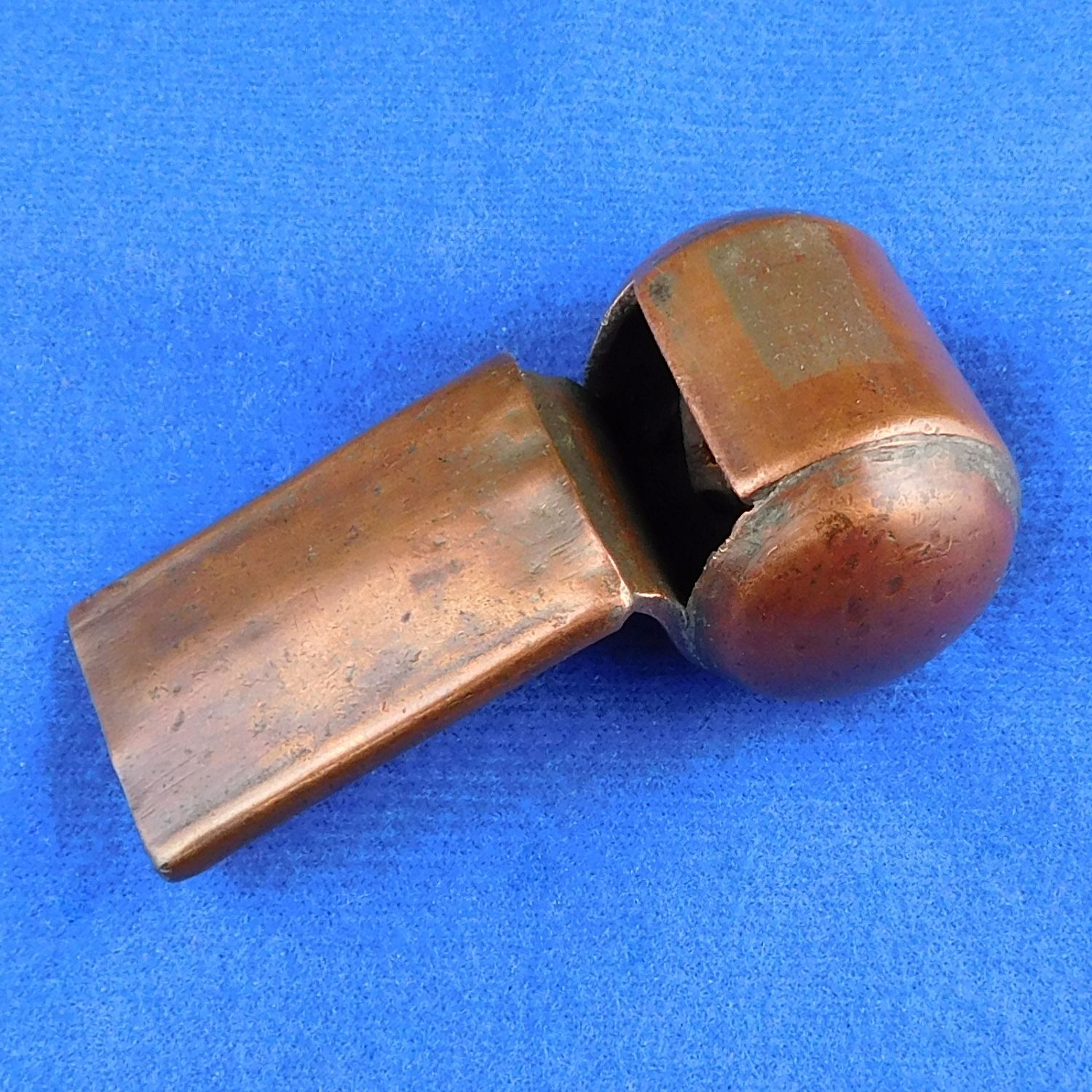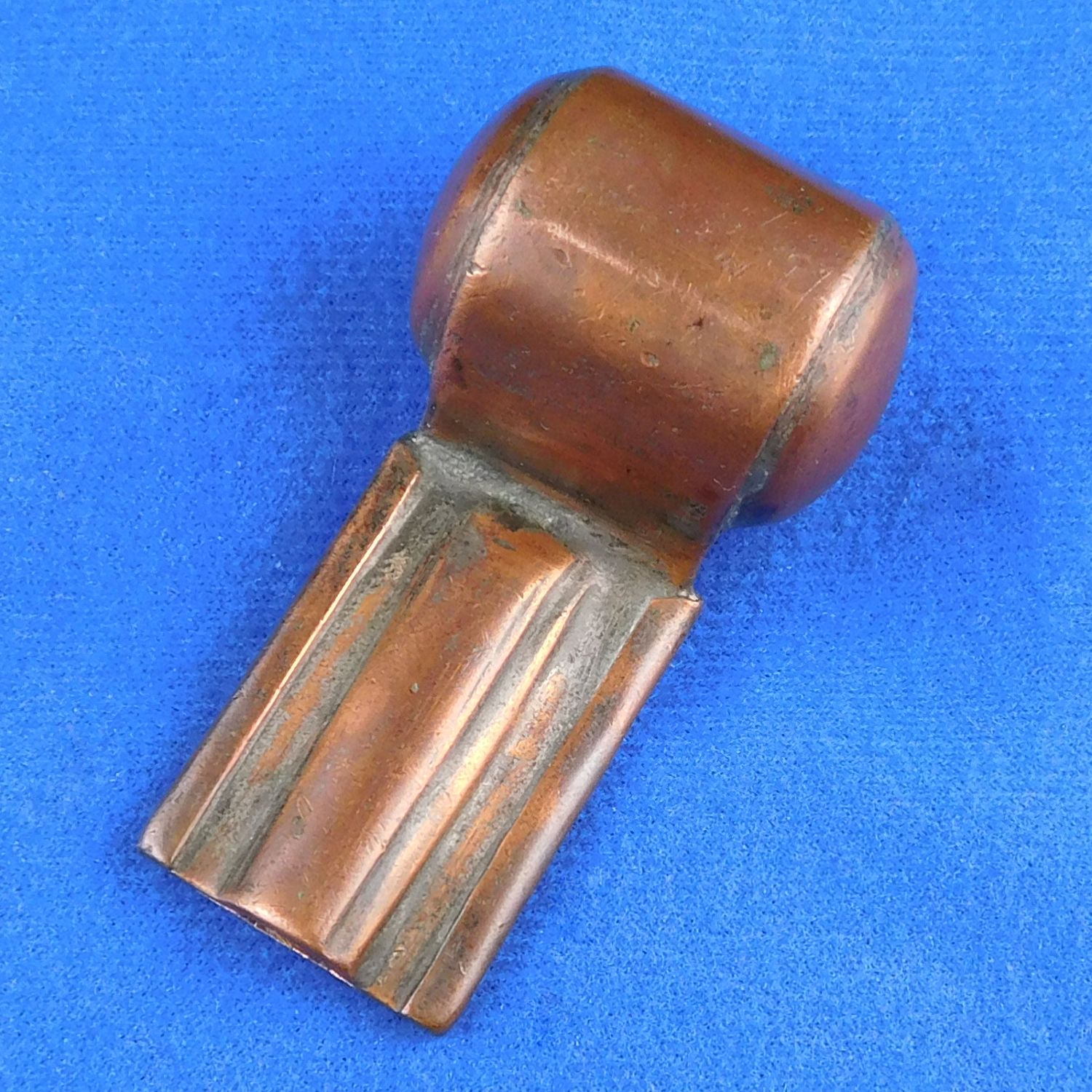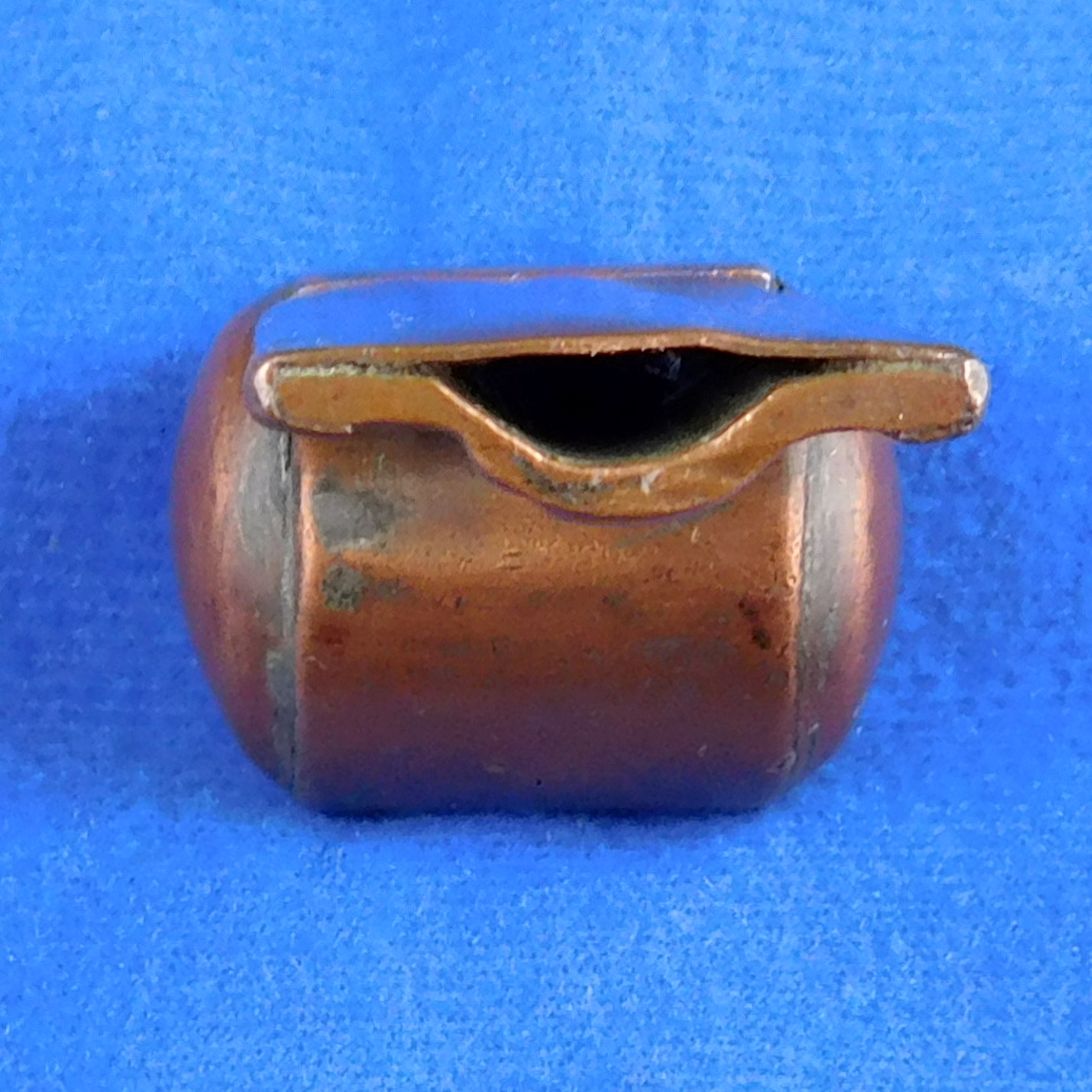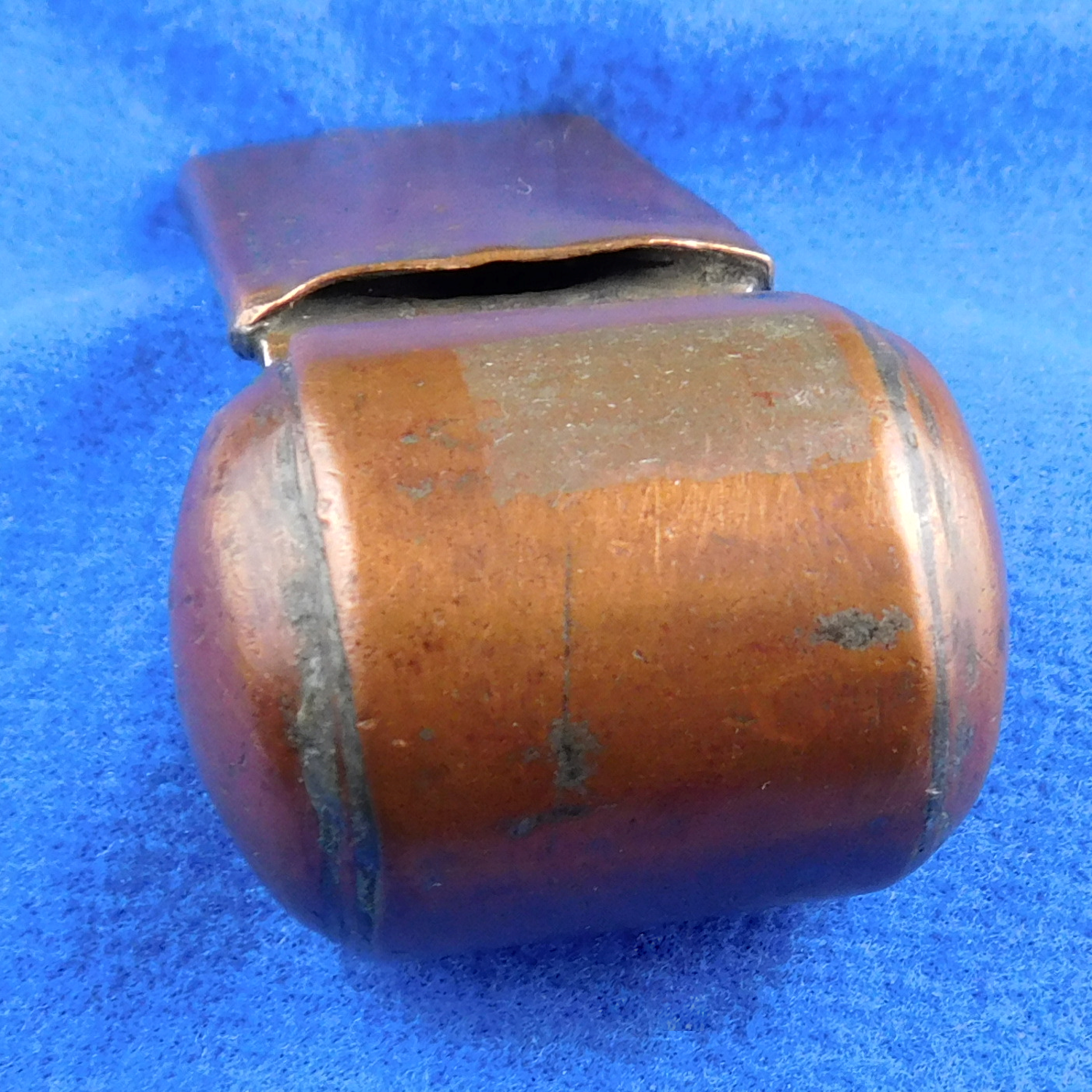Spotlight > Whistle Categories > Escargot > 104
Whistory:
Here is a departure from the ‘norm’ when it comes to whistles, a very unusual whistle in several ways. Of course, we find this one very difficult to date and identify by maker without a stamp and due to its own peculiarities.
However there is some interesting ingenuity involved and demonstrated by someone with certain skills in metal work. Perhaps it is one of a kind ( ‘one-off’ ), perhaps one of several attempts. None the less, this one is not likely to be a whistle produced on any sort of production levels and so we would think custom made.
First of all it is made of copper, which we do see only occasionally — but not custom made and on this level. There are innovations to the mouthpiece and sidewalls. Of course without any identifying stamp marks whatsoever there is even less to go on. No features are idiosyncratic with any other whistles.
A pure copper made whistle is unusual and therefore rare although not valuable or commanding high prices. Why unusual ?? Because metal materials that were commonly used would be metals that did not easily corrode with moisture and ‘other’ fluids — such as, of course saliva. Metals would ordinarily be gold, silver, nickel silver, brass and the like. Although steel used when making a heavy whistle or as light ‘tin’ whistles are seen far more often than copper, yet they are definitely corrosive in the mouth and also just plain rust.
Typically people who collect vintage whistles prefer heavy quality made whistles. However, that goes against the nature of easy to use. Yet, collectors seem to pick their whistles by everything BUT sound or at least lastly so. So it goes that a large whistle, although clumsy to use, is much sought after, its original use lost in time.
Whistology:
Notable features include:
Material
Size
Weight
Mouthpiece
Sidewalls
This large escargot whistle is rustic in construction. It is made entirely of copper and has no knop. This would make it more difficult to keep track of and store on the person when not in use ( where to put it ?? ). Ordinarily it would hang by a knop.
There is some interesting metal work involved where the sidewalls connect to the barrel ends and where the mouthpiece is formed. It is slightly askew.
Being a four piece whistle it has a wraparound barrel into the mouthpiece accompanied with a top plate and then the two sides.

The size is 25% longer than a standard Glasgow escargot. Mainly the mouthpiece being longer, however the width is perhaps 20% wider also.
It takes quite a bit of air pressure to get the sound going and this creates a deeper sound due to the larger barrel size. It has a small cork ‘pea’.

A standard escargot ( the police special comparably ) comes in at 43 grams. Whereas the large copper escargot comes in at 65 grams, a heavy whistle besides being larger.
The mouthpiece is very unique. The top plate is quite thin and wraps around both sides of the mouthpiece. At the same time the bottom is very thick and part of the continual one piece forming the barrel.

The mid way ‘rolling’ wave of the bottom side of the mouthpiece is not a separate plate. This amounts to the underside of the tongue having had to be wider than the single piece used to form the barrel. Then it would have been ‘pressed’ to form the wave that gives it solidity, as that likely would have taken extra metal when forming.

Lastly we see the rounded barrel ends. They are concave and hand formed also.
The attachment is rough as such are seen on button whistles.

Although a small subject and a brief article, we hope you have enjoyed seeing another unique whistle. Each time we are edified it adds to our worldwide fund of knowledge and provides clues in hunting down the histories involved with whistle makers.
TWG
Posted September 5, 2019








